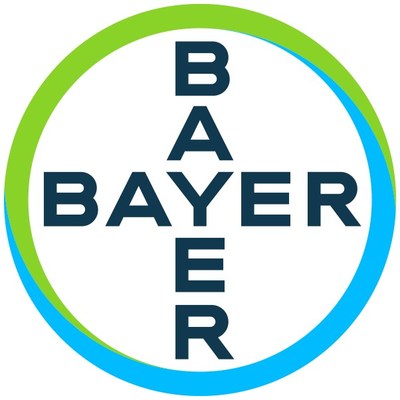

WHIPPANY, N.J., Oct. 21, 2019 /PRNewswire/ -- Bayer today announced recipients of the inaugural Pulmonary Hypertension Accelerated Bayer (PHAB) Awards, a U.S.-based research grant program created to support clinical research in pulmonary hypertension (PH), with a focus on pulmonary arterial hypertension (PAH) and chronic thromboembolic pulmonary hypertension (CTEPH). The recipients will receive a combined total of $1 million in grants over a two-year period, making the PHAB Awards one of the largest industry-funded grant programs focused on PAH and CTEPH in the U.S. The eight award recipients were formally announced at a ceremony during the American College of Chest Physicians (CHEST) Annual Meeting in New Orleans on Sunday, October 20, 2019.

"Supporting a new generation of researchers is imperative to ensure we continue the progress that has been made during the past decade in pulmonary hypertension and its related conditions," said Aleksandra Vlajnic, M.D., Senior Vice President & Head Medical Affairs Americas at Bayer. "Our hope is that the PHAB Awards program will encourage researchers to think creatively about solving the significant treatment and patient care challenges that remain, knowing Bayer is committed to providing the support needed to help bring those ideas to fruition. We want to congratulate all of the applicants on their winning proposals."
The recipients are:
The PHAB Awards recipients were selected by an independent Grants Review Committee, consisting of the following eminent PH leaders:
"I would like to thank and recognize the Grants Review Committee for their time and commitment, and the PH community in the U.S. for their overwhelming response to the inaugural PHAB Awards," said Sameer Bansilal, M.D., M.S., Medical Director, U.S. Medical Affairs at Bayer. "We look forward to an even greater response next year and encourage eligible applicants to start thinking about submitting their research proposals."
The PHAB Award eligibility, review and category criteria were modeled after the National Institutes of Health (NIH) system; entries were graded on significance, investigator(s), innovation, approach, and environment.
For more information on the PHAB Awards visit: https://www.phab-awards.com/awards/ or e-mail PHAB.awards@bayer.com.
Grants were made on the merits of the research, and research must be posted on ClinicalTrials.gov. Every effort should be made to publish or present study outcomes. If the research is not conducted the grant must be returned.
About Pulmonary Arterial Hypertension (PAH)
Pulmonary Arterial Hypertension (PAH, WHO Group 1) is defined by elevated pressure in the arteries going from the right side of the heart to the lungs. Typical symptoms of PAH include shortness of breath on exertion, fatigue, weakness, chest pain and syncope. PAH is caused by abnormalities in the walls of the pulmonary arteries.1,2
About Chronic Thromboembolic Pulmonary Hypertension (CTEPH)
Chronic Thromboembolic Pulmonary Hypertension (CTEPH, WHO Group 4) is a progressive type of pulmonary hypertension, in which it is believed that thromboembolic occlusion (organized blood clots) of pulmonary vessels gradually lead to an increased blood pressure in the pulmonary arteries, resulting in an overload of the right heart.3,4 CTEPH may evolve after prior episodes of acute pulmonary embolism, but the pathogenesis is not yet completely understood. The standard and potentially curative treatment for CTEPH is pulmonary thromboendarterectomy (PTE), a surgical procedure in which the blood vessels of the lungs are cleared of clot and scar material.5,6 However, a considerable number of patients with CTEPH (20%-40%) are not operable and in up to 35 percent of patients, the disease persists or reoccurs after PTE.7
About Bayer
Bayer is a global enterprise with core competencies in the life science fields of health care and nutrition. Its products and services are designed to benefit people by supporting efforts to overcome the major challenges presented by a growing and aging global population. At the same time, the Group aims to increase its earning power and create value through innovation and growth. Bayer is committed to the principles of sustainable development, and the Bayer brand stands for trust, reliability and quality throughout the world. In fiscal 2018, the Group employed around 117,000 people and had sales of 39.6 billion euros. Capital expenditures amounted to 2.6 billion euros, R&D expenses to 5.2 billion euros. For more information, go to www.bayer.us.
Our online press service is just a click away: www.bayer.us/en/newsroom
Follow us on Facebook: http://www.facebook.com/pharma.bayer
Follow us on Twitter: https://twitter.com/Bayerus
Media Contact:
David Patti, +1-973-452-6793
Bayer, U.S. Product Communications
david.patti@bayer.com
Forward-Looking Statements
This release may contain forward-looking statements based on current assumptions and forecasts made by Bayer management. Various known and unknown risks, uncertainties and other factors could lead to material differences between the actual future results, financial situation, development or performance of the company and the estimates given here. These factors include those discussed in Bayer's public reports which are available on the Bayer website at www.bayer.com. The company assumes no liability whatsoever to update these forward-looking statements or to conform them to future events or developments.
References:
1 Galie et al. 2015 ESC/ERS Guidelines for the diagnosis and treatment of pulmonary hypertension. Eur Heart. 2016;37:67–119.
2American Lung Association. Pulmonary Hypertension. Accessed November 22, 2017. http://www.lung.org/lung-health-and-diseases/lung-disease-lookup/pulmonary-hypertension.
3 Piazza G and Goldhaber SZ. Chronic thromboembolic pulmonary hypertension. N Engl J Med. 2011; 364: 351-360.
4 Simonneau G et al. Updated Clinical Classification of Pulmonary Hypertension. Journal of the American College of Cardiology. 2013; 62(25):
5 D'Armini M. Diagnostic advances and opportunities in chronic thromboembolic pulmonary hypertension. Eur Respir Rev. 2015; 24: 253–262.
6 Kim et al. Chronic thromboembolic pulmonary hypertension. J Am Coll Cardiol. 2013; 62: D92-9.
7 Mathai et al. Quality of life in patients with chronic thromboembolic pulmonary hypertension. Eur Respir J. 2016 Aug; 48(2): 526–537.
SOURCE Bayer
